Combating Salt Water Intrusion Across the USA
Guard Against Salt Water Intrusion
Speak to a Water Expert Today!


Salt Water Intrusion is a concerning phenomenon observed across the USA, affecting areas from the Ohio Valley to New Orleans, the Carolinas, and Florida. This process sees saline water from the ocean seeping into freshwater sources, compromising the quality and safety of water that communities rely on for drinking and other household uses.
This summer, drought hit the Ohio Valley, leading to heightened sodium levels in the Mississippi River near New Orleans. This has resulted is a notable instance of salt water intrusion, what is being referred to as the “Saltwater Wedge."
Salt water intrusion can threaten our water quality and health. Fill out our form to speak with a water expert now to help safeguard your drinking water.
What's the Solution?
Reverse osmosis (RO) is a water purification process that removes impurities, including salt, from a water supply. It works on the principle of selective permeability and uses a semi-permeable membrane to separate the dissolved salts and other contaminants from the water. Here's how the reverse osmosis process removes salt from water:
- Semi-Permeable Membrane: At the heart of the reverse osmosis system is a specialized semi-permeable membrane. This membrane has very tiny pores or holes that are only large enough to allow water molecules to pass through while blocking larger ions, molecules, and contaminants like salts, minerals, and impurities.
- Pressure: To drive the water through the semi-permeable membrane, a significant amount of pressure is applied to the incoming water. This pressure is usually generated by a pump in the RO system. The pressure is essential because it helps overcome the natural osmotic pressure that tends to push water towards the more concentrated solution (higher salt concentration) on the other side of the membrane.
- Separation of Water and Salts: As the pressurized water is forced through the semi-permeable membrane, only the water molecules can pass through. The larger salt ions, minerals, and contaminants are too large to fit through the tiny pores of the membrane. Therefore, they are effectively blocked and remain on one side of the membrane, typically referred to as the "reject" or "concentrate" stream.
- Pure Water Output: On the other side of the membrane, the purified water, known as the "permeate" or "product" stream, flows through. This purified water is free from most salts, minerals, and contaminants and is collected for use as clean drinking water or for various other applications.
- Waste Disposal: The rejected salts and impurities that couldn't pass through the membrane are typically flushed away as a waste stream. This helps prevent the accumulation of concentrated salts on the membrane surface, which could reduce its efficiency over time.
- Final Treatment: In some cases, post-treatment measures may be applied to the purified water to ensure it meets specific quality standards or to adjust its taste or mineral content. These treatments can include adding minerals back to the water or adjusting the pH level.
So, if you have water with significant sodium levels and a TDS (Total Dissolved Solids) level of up to 2500 ppm, then reverse osmosis is ultimately the ONLY solution to solving this saltwater intrusion. If you have levels higher than 2500 TDS then it takes a different type of reverse osmosis system. That is called a brackish RO system. However, most saltwater wedges and intrusion are below 2500 TDS. In fact, many are below 1000 TDS.
US Water Systems Reverse Osmosis Lineup


Designed for under sink drinking water applications only for TDS up to 1000. Typically for applications of a few gallons a day. This would not be for a whole house application. Does not use electricity or have a pump.
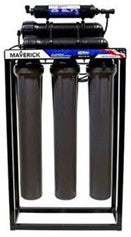

Engineered for light duty applications, such as a lab, beverage service, or a laboratory - for TDS up to 1000. Typically for applications of a hundred or so gallons a day. This would not be for a whole house application. It does use a diaphragm pump which is for very light applications.
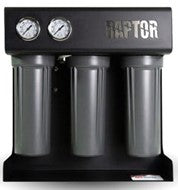

Like the Maverick, the Raptor is engineered for light duty applications, where a countertop system is needed - for TDS up to 1000. Typically for applications of a hundred or so gallons a day. This would not be for a whole house application. It does use a diaphragm pump which is for very light applications.
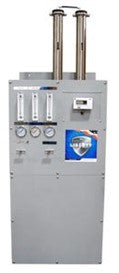
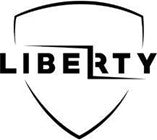
The Liberty RO System is engineered for a little heavier duty applications, where a higher volume of water is needed - for TDS up to 1500. It does use a stainless steel rotary vane pump and it could be utilized as a part of small whole house application, but it is not engineered to last for years like out true Whole House RO system.
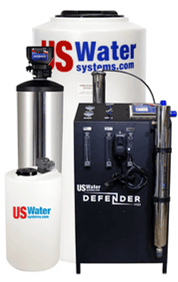

The Defender HD is engineered to be a true heavy duty whole house RO system. It uses stainless steel membrane housings, stainless steel UV, SS reinforced Sch 80 Fittings along with SS threaded fittings. Most importantly it uses a stainless steel centrifugal pump which is manufactured to the most stringent applications. It includes everything necessary for a whole house application, including the tank, carbon filter and anti-scalant. It also have DOUBLE the warranty of any other whole-house RO system.
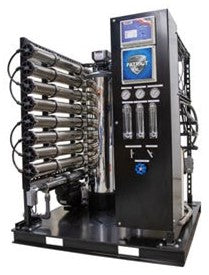

The Patriot XL is a true Plug n Play commercial reverse osmosis system which produces up to 20,000 gallons of pure water each day (larger and smaller sizes are available upon request). The Patriot XL is configured for municipal water that contains chlorine and/or chloramine, but can be custom-configured for well with site specific needs, including iron, sulfur, arsenic, nitrate, boron, manganese and numerous other contaminant removal. Each RO System is custom-engineered based upon site specific applications, and existing water chemistry.
US Water Systems manufacturers these high quality Reverse Osmosis Systems in out Indiana plant and our quality is uncompromised. If you are seriously looking at whole house reverse osmosis, the you need to comprehend that a reverse osmosis system with a diaphragm pump or a rotary vane pump is not a viable system and has no longevity.
If you are dealing with salt-water intrusion then there really is only one type of pump that really suits that application: A Stainless Steel Multi-Stage Centrifugal Pump! Why stainless steel? Well, most pumps are bronze and bronze is subject to corrosion from the salty water.
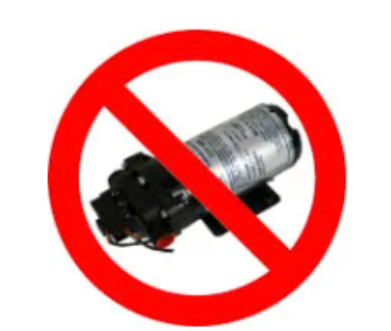
Diaphram Pump
Light duty pump for intermittent applications. commonly used tor under-sink RO applications.
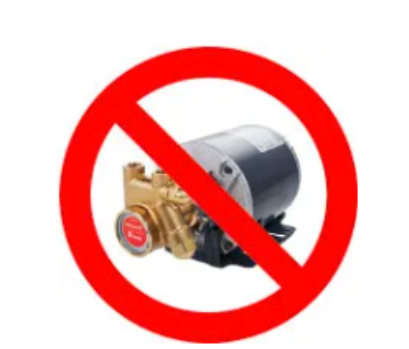
Rotary Vane Pump
Standard pump for residential RO applications where continuous operation is not needed.
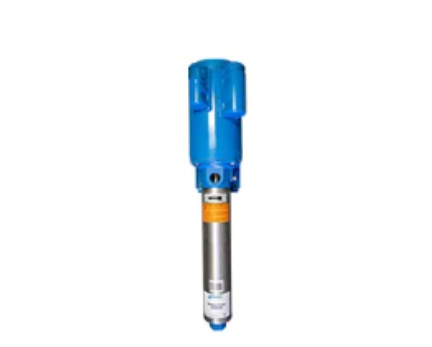
Multi-Stage Centrifugal Pump
Heavy-duty, stainless steel commercial grade pump engineered for continuous operation over a long period of time.
Occasionally, if the TDS gets too high (typically over 3000 or more) we use what is called a “Brackish RO System” which is engineered for even higher TDS levels. This is generally not something that is needed in cases of salt-water intrusion or a “salt water wedge”.
Not only can a home reverse osmosis system protect your home's appliances and plumbing against salt water intrusion and corrosion, but since “reverse osmosis removes the largest spectrum of contaminants” of any water treatment process, you can rest assured that other contaminants such as PFOA/PFAS, Arsenic, Cryptosporidium (there has recently been an outbreak of this in Baltimore), and a plethora of others will be removed from your water supply.
Solutions and the Path Ahead:
The report "Breaking the Plastic Wave" highlights that humanity can reduce plastic flow into the ocean by up to 80% by 2040 through concerted efforts by governments and industries. While there are no quick fixes, with sustained and widespread commitment, the ocean plastic problem can be resolved within a generation if we start now! The first step is to cut-down immensely on these microplastics.
A home reverse osmosis system helps you do just that and while older reverse osmosis systems used to be wasteful, newer systems are up to 75% efficient. That means that they waste just one gallon of water for every four gallons they make… and if you want to be super-efficient, that 255 can be recaptured and used to flush toilets and other utility and rinsing processes.



